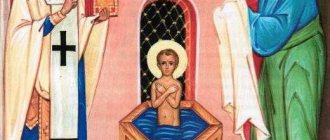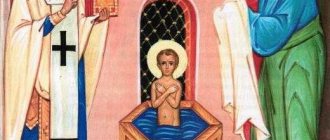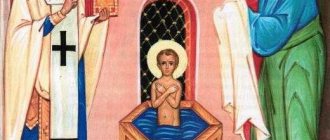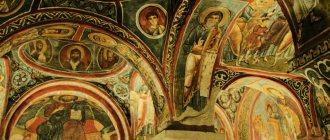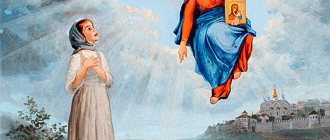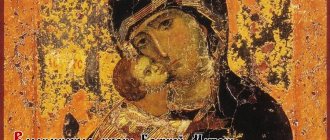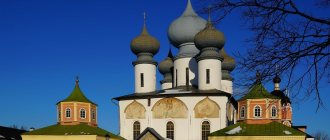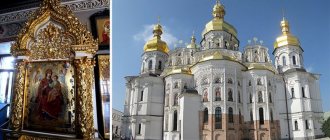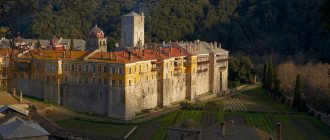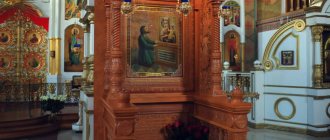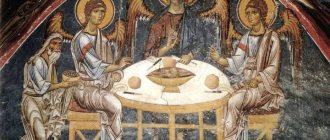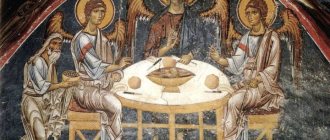For Orthodox believers, not only saints who are famous for their exploits before the Lord God are of great importance. An important role in the lives of believers is played by simple clergy who have earned love and loyalty thanks to their all-consuming faith and ability to perform miracles. Among such servants of the Lord, Saint Luke stands out, whose feast day falls on June 11.
The relics of the archbishop are kept in Simferopol, the city where the saint served and lived his last years. It is at this shrine that many healings and miracles occur today. Therefore, every year tens of thousands of pilgrims of the Orthodox faith come to this place.
Life of Luke Krymsky
The story of the future saint began in Kerch, when at the end of April 1877 the third son, Valentin Feliksovich Voino-Yasenetsky, was born to a Catholic pharmacist. He was raised by his mother, a sincere Orthodox Christian. Despite the fact that the father of the future doctor was raised in the Catholic faith, the children were raised in the Orthodox faith. Since childhood, Valentin showed great zeal in painting and even graduated from the Kyiv Art School after moving.
After graduating from high school, the young man was going to enter the Art Academy in St. Petersburg, but changed his mind and went to study law, which he left for the sake of medicine. After graduating from Kiev University and its Faculty of Medicine, Valentin began practice, specializing in eye surgery.
Further, his story is connected with many years of surgical activity. At the same time, the doctor was highly religious and always had an icon in his operating room, which he touched before starting work.
After his wife died, Valentin Feliksovich (secular name) was ordained and began spiritual asceticism. As a result, he was first a priest in the temple, and then became a monk and became a bishop.
At the same time, he conducted spiritual activities and sermons no less in the period from the 1920s, that is, precisely when churches were destroyed, and Christianity was not particularly popular, and other doctors were skeptical about Valentin’s activities.
However, now the icon of St. Luke Voino Yasenetsky (the saint’s surname) is in many homes, but they don’t even remember those doctors. What is surprising here is the continuous activity of the saint in the field of medicine; he continued to practice continuously and not only preached, but also wrote valuable medical books. They are still in demand.
Before World War II, he was persecuted and spent a lot of time in prison. At the end of the war, he managed to gain recognition and be amnestied.
After and until his death he was Bishop of Crimea and Simferopol, in this post he carried out active preaching activities and received the sick.
Chronology of life
After the war with Japan began in eastern Russia, doctor Voino-Yasenetsky went there as a volunteer, where in the city of Chita he began working in a hospital at the Red Cross.
Having become the chief physician of the surgical department, he performed operations on a wounded soldier and there he met his future wife, Anna Vasilievna, who worked as a nurse.
Immediately after the marriage, a period of family moving began:
- 1905 - 1910: work in many different district hospitals, where Valentin did not limit himself to surgery, accepting people and acting as both an ophthalmologist and a therapist. During this period, he also discovered an alternative method of pain relief - anesthesia of the sciatic nerve, which later became the topic for Voino-Yasensky’s doctoral dissertation;
- 1910: moving to the city of Pereslavl-Zalessky, where after many years of hard work the doctor decided to study purulent surgery;
- 1917: the beginning of the revolution in Russia, Valentin’s wife becomes infected with tuberculosis and the family moves to Tashkent. There Valentin Feliksovich becomes the head of the surgical department;
- 1918: the beginning of the doctor’s teaching career, where he taught a course on topographic anatomy and surgery. Already at this time, Valentin Feliksovich began to think about the Almighty God, a lamp and a burning candle appeared in his office, and before the operations the doctor began to pray for a successful outcome. In the same year, Valentin Feliksovich’s wife dies of tuberculosis;
- 1921: Valentin’s ordination to the rank of deacon, and then priest;
- 1923: Father Valentin took monastic vows and adopted a new name - Luke. In the same year he was ordained a bishop, and immediately after that he was arrested and began three exiles;
- 1924: While in exile, the archbishop performs a complex operation to transplant a kidney from an animal to a human. This kind of operation had not previously been carried out in the USSR, but instead of liberation, the authorities sent the doctor to the village of Hayu, where exile and medical practice continued;
- 1925: the prisoner was transferred to the city of Yeniseisk, where he was allowed to practice medicine and serve in the local monastery. End of the first exile and return to Tashkent;
- 1930-1933: exile in Arkhangelsk;
- 1934: publication of the doctor’s work “Essays on Purulent Surgery”;
- 1937: another arrest and torture;
- 1939: exile to Siberia. Appointment as chief physician of a military hospital in Krasnoyarsk, where he operated on wounded soldiers;
- 1943: amnesty and appointment as Bishop of Krasnoyarsk;
- 1944: the doctor was transferred to Tambov, where he continued his medical and religious practice, restoring churches, reorganizing hospitals, until his health deteriorated;
- 1946: the doctor was awarded the Stalin Prize. Transfer to Simferopol due to deteriorating vision and health;
- 1956: the priest becomes completely blind, but continues to work for the good of the Church of Christ;
- 1961: On June 11, the archbishop died peacefully in his sleep.
Biography
27
April
1877
in the city of Kerch, in a large family, Valentin Feliksovich Voino-Yasenetsky was born.
The father of the future saint, Voino-Yasenetsky Felix Stanislavovich, worked as a pharmacist, his mother, Maria Dmitrievna, was involved in charity work and raising children. The Voino-Yasenetsky family had Polish roots. After graduating from high school, Valentin took the entrance exams to the St. Petersburg Academy of Arts, but changed his mind about enrolling.
“I don’t have the right to do what I like, but I have to do what is useful for people.”
- this formula became his internal credo until the end of his life. When Valentin Feliksovich turned 21, he entered the university at the Faculty of Medicine in Kyiv.
“The ability to draw very delicately and my love for form turned into a love for anatomy. From a failed artist I became an artist in anatomy and surgery."
After final exams, the future doctor becomes a zemstvo doctor:
“I studied medicine with the sole purpose of being a zemstvo, peasant doctor all my life.”
The young specialist worked at the Kiev Red Cross Medical Hospital and participated in the Russo-Japanese War. He was the head of the surgical department in Chita, and performed the most complex operations.
Useful materials
In 1904, Valentin married Anna Vasilievna Lanskaya, a nurse at the Kyiv hospital. Subsequently, the wife helped her husband a lot in his work, accepting patients and keeping medical histories.
For some time, Valentin Feliksovich worked by invitation in the provincial city of Simbirsk, then became a zemstvo doctor in the provincial town of Ardatov, after which he worked in the village of Verkhniy Lyubazh, Kursk province, and then in the city of Fatezh. In 1907, his first-born Mikhail was born. Daughter Elena was born after the family moved to the city of Zolotonosha.
In 1909, the professor worked in the Saratov region and was the chief physician of a hospital in the village of Romanovka. In 1910, his son Alexei was born. In the city of Pereslavl-Zalessky, Valentin Feliksovich was in charge of a military hospital and was the head of several hospitals. In 1913, he again became a father, a boy, Valentin, was born.
Due to the illness of his wife, Anna Vasilievna, with tuberculosis, Voino-Yasenetsky decides to move his family to Central Asia. In Tashkent, he works as the chief physician of a local hospital.
In January 1919, the doctor and his resident were arrested for hiding and secretly treating a seriously wounded Cossack captain. In October 1919, Anna Vasilievna died of illness. Valentin Feliksovich was left alone with small children. Misha, the eldest, was 12 years old, the youngest Valentin was only 6. The children were taken into her care by a nurse from the hospital where the professor worked, Sofya Sergeevna Beletskaya.
At the end of 1920, at a diocesan meeting, Valentin Feliksovich accepted the offer of Bishop Innocent of Turkestan and Tashkent to become a priest. At first he served as a cleric, then received the rank of subdeacon, then deacon, and at the beginning of 1921 he became a priest.
31
May
1923
year the sacrament of ordination of Bishop Luke as Bishop of Barnaul was performed.
Later he headed the Turkestan diocese.
Here is an excerpt from his sermon:
“To me, a priest, who defended the flock of Christ with his bare hands, from a whole pack of wolves and weakened in an unequal struggle, at the moment of greatest danger and exhaustion, the Lord gave me an iron rod, a bishop’s rod, and with the great grace of the hierarch, powerfully strengthened me for the further struggle for the integrity and preservation of the Turkestan diocese.” .
At the beginning of June 1923, the archbishop was arrested. He was accused of failure to comply with orders from local authorities. At the end of November he was exiled to Yeniseisk, then to the village of Khaya, then transported to Turukhansk. Everywhere Luke carried out complex operations, performed divine services and continued to preach in church. After refusing the offer to leave the rank, his exile continued in the village of Plakhino, which was located on the Yenisei. In 1925, at the end of November, the bishop was released.
On May 6, 1930, Luka was arrested again on charges of assisting in the murder of a professor of physiology in Central Asia, who actually committed suicide by going crazy. The bishop was exiled to Arkhangelsk, where he worked and received patients on an outpatient basis. They offered him to renounce the priesthood, promising him the chair of surgery in return.
Luke answered:
“Under current conditions, I do not consider it possible to continue serving, but I will never remove my rank.”
After his release in the spring of 1934, Luka fell ill with a complicated fever and lost sight in one eye. In 1934, the professor published his treatise “Essays on Purulent Surgery,” which became known throughout the world.
On July 24, 1937, the bishop was taken into custody for the third time. Accused of creating a “counter-revolutionary church-monastic organization.”
Father Luke expressed his attitude towards politics with the words:
“... The Bolsheviks are the enemies of our Orthodox Church, destroying churches and persecuting religion, my enemies, as one of the active figures of the church, a bishop.” The bishop was tortured by long interrogations, and in the appendix to his file he wrote: “...I can recognize myself as a counter-revolutionary only to the extent that this follows from the fact of the commandment of the Gospel, but I have never been an active counter-revolutionary...”
In February 1940, he was sentenced to five years of exile in the Krasnoyarsk Territory. In 1943, Luke was appointed Archbishop of Krasnoyarsk and Yenisei.
icon of St. Luke Krymsky
Heading the Tambov See since 1944, the bishop restored the Intercession Church of Tambov, actively preached, opened more than 20 parishes, and contributed to the creation of a bishop's choir. Under the leadership of Archbishop Luke, great assistance was organized for the front; a total of about a million rubles were transferred for its needs.
He was awarded the honorary medal “For Valiant Labor in the Great Patriotic War.” On April 5, 1946, Archbishop Luka was transferred to Simferopol.
The professor gave lectures for doctors in the Crimean region and supervised the Simferopol military hospital. In 1955 he became completely blind and was forced to leave surgery. At the beginning of 1957, the bishop was elected an honorary member of the Moscow Theological Academy.
Luke wrote:
“...how difficult it was for me to swim against the turbulent current of anti-religious propaganda, and how much suffering it caused me and still causes”... Many more decades will pass before our life will be completely normal.”
11
June
1961
Archbishop Luke departed to the Lord. He was buried in a cemetery in the city of Simferopol.
People who came for help and prayed at the grave of Bishop Luke were often healed of illnesses.
22
November
1995
The Synod of the Ukrainian Orthodox Church canonized Archbishop Luka of Simferopol and Crimea as a locally revered saint. The discovery of the holy relics of the archbishop took place in 1996; the relics are located in the Holy Trinity Cathedral in Simferopol. The Krasnoyarsk diocese also canonized Luke as a locally revered saint.
In 2000, at the Council of Bishops of the Russian Orthodox Church, the archbishop was canonized as a new martyr and confessor of Russia. He is also revered as a saint by the Greek Orthodox Church.
In honor of the name of Professor Voino-Yasenetsky, the “Society of Orthodox Doctors of Russia” was created.
Days of remembrance of St. Luke of Crimea: June 11 - in honor of the end of the saint’s earthly journey. March 18 - discovery of many healing relics of St. Luke of Crimea. February 7 — The celebration is timed to coincide with the Council of New Martyrs and Confessors of Russia.
Description of the icon
The image of the saint on icons most often repeats his appearance, close to photographs. There are icons of Luke of Crimea with hagiographic stamps.
There are icons where Luke of Crimea is depicted in a light cassock with a panagia, sitting at a table. This image symbolically conveys how the saint managed to combine invaluable scientific works with episcopal service.
Usually the saint is depicted in bishop's vestments, with a panagia, with a monastic hood on his head, his right hand blessing those praying. In the hands there may be a bishop's staff, a cross or the Holy Gospel. Sometimes there is a suitcase with medical instruments nearby.
Since icons of the saint are often placed in medical institutions, he can be depicted in a medical gown, cap and glasses.
New persecution
In 1937, the bishop was again arrested on charges of murder, underground counter-revolutionary activities and conspiracy to destroy Stalin. Some of his colleagues, arrested with him, gave false testimony against the bishop under pressure. For thirteen days the saint was interrogated and tortured. After Bishop Luke did not sign the confession, he was again subjected to conveyor interrogation.
For the next two years he was imprisoned in Tashkent, periodically subjected to aggressive interrogation. In 1939 he was sentenced to exile in Siberia. In the village of Bolshaya Murta, Krasnoyarsk Territory, the bishop worked in a local hospital, operating on numerous patients under incredibly difficult conditions. The difficult months and years, full of hardships and hardships, were worthily endured by the future saint - Bishop Luke of Crimea. The prayers he offered for his spiritual flock helped many believers in those difficult times.
Soon the saint sent a telegram addressed to the Chairman of the Supreme Council asking for permission to operate on wounded soldiers. Next, the bishop was transferred to Krasnoyarsk and appointed chief physician of a military hospital, as well as a consultant to all regional military hospitals.
While working at the hospital, he was constantly monitored by KGB officers, and his colleagues treated him with suspicion and distrust, which was due to his religion. He was not allowed into the hospital cafeteria, and as a result he often suffered from hunger. Some nurses, feeling sorry for the saint, secretly brought him food.
How does the icon of the Archbishop of Crimea help?
The icon of St. Luke of Crimea depicts him, dressed in a robe and standing with his hand raised, blessing the believers, because the ministry of the archbishop lies precisely in caring for people. Sometimes the saint is depicted sitting at a table with a book, as if showing his work and side of scientific activity.
This image has a more edifying character, since it tells believers the life story of the saint. In the world you can also find copies of boards where the archbishop is depicted standing, with a cross in his right hand, and where he holds various surgical instruments, which indicate the profession of the saint during his lifetime.
Considering the difficult life of the saint, it is not surprising that on the icon he is depicted with a look that conveys all the sadness and severity of human troubles. The icon of St. Luke serves as an excellent amulet for the seriously ill. People rush to pray to her in such cases:
- ask for healing of body and soul;
- women pray for a normal pregnancy and the birth of a healthy baby;
- if surgical intervention is necessary, they ask about its successful resolution;
- hope to establish the correct diagnosis and prescribe the correct treatment.
The icon of St. Luke is often placed in medical institutions so that patients have the opportunity to pray without leaving the room. An icon of St. Luke of Crimea is necessary in the home of every sick person.
If the disease comes on suddenly and it is not possible to make a correct diagnosis, you need to pray to this saint. Without an icon in the house, you should definitely purchase one. Near the icon, 12 church candles are lit and a small glass of holy water is placed. Believing and imagining your complete recovery, you can begin to read the prayer. Its text is as follows:
Saint Luke, healer and magician. Heal me from illness and disease, save me from mental pain. Cleanse me from sinful scourge, from carnal and tempting sweetness. Reject the villains and sorcerers and heal our souls forever and ever. Thy will be done. Amen.
After prayer, you need to drink a little water and cross yourself. It is advisable to perform this ritual until complete healing. You should pray heartily, and Saint Luke will definitely hear and come to your aid.
There are many testimonies of healings after turning to the saint. Luke never refuses those who ask and intercedes with the Lord on their behalf. That is why there is always a line of worshipers to see his icon, and masses of people flock to his relics every year.
Prayer to Luke of Crimea for healing
O all-blessed confessor, holy saint, our Father Luke, great servant of Christ. With tenderness we bow the knee of our hearts, and falling before the race of your honest and multi-healing relics, like the children of our father, we pray to you with all earnestness: hear us, sinners, and bring our prayer to the merciful and man-loving God, to whom you now stand in the joy of the saints and from the face of an angel . We believe that you love us with the same love that you loved all your neighbors while you were on earth.
Ask Christ our God to confirm His children in the spirit of right faith and piety: to the shepherds to give holy zeal and care for the salvation of the people entrusted to them: to observe the right of believers, to strengthen the weak and infirm in the faith, to instruct the ignorant, to reprove the contrary. Give us all a gift that is useful to everyone, and everything that is useful for temporary life and eternal salvation: the establishment of our cities, the fruitfulness of the land, deliverance from famine and destruction, consolation for the afflicted, healing for the sick, return to the path of truth for those who have gone astray, blessing for the parent, blessing for the child in distress. The Lord's upbringing and teaching, help and intercession for the orphaned and needy.
Grant us all your Archpastoral blessing, so that if we have such prayerful intercession, we will get rid of the wiles of the evil one and avoid all enmity and disorder, heresies and schisms. Guide us on the path that leads to the villages of the righteous, and pray for us to the omnipotent God, in eternal life we will be worthy with you to constantly glorify the Consubstantial and Indivisible Trinity, the Father and the Son and the Holy Spirit. Amen.
Troparion, kontakion
To the herald of the path of salvation, the confessor and archpastor of the Crimean land, the true keeper of fatherly traditions, the unshakable pillar of Orthodoxy, the teacher of Orthodoxy, the godly physician Saint Luke, continually pray to Christ the Savior to grant the unshakable faith to the Orthodox and salvation and great mercy.
Like an all-bright star, shining with virtues, you were the saint, you created a soul equal to the angel, for this sake you are honored with the rank of holiness, you suffered a lot in exile from the godless and remained unshaken by faith, and with your medical wisdom you healed many. In the same way, now the Lord glorified your venerable body, wondrously found from the bowels of the earth, and let all the faithful cry out to you: Rejoice, Father Saint Luke, praise and affirmation of the Crimean land.
Where is the icon
This image is in the Luke Church in Moscow, in the city hospital, there is the Church of Luke in Saransk, in the Peter and Paul Church in St. Petersburg, in the Church of Panteleimon the Healer in Tambov. Monuments were even erected to St. Luke in Tambov, near the hospital of St. Luke. He was an outstanding doctor who proved the inextricable connection between spirit and body.
Science and religion should always be in harmony. These are two pillars, two areas of life that should be inseparable. Yes, the church does not depend on science, but the opposite process occurs. Science needs spiritual support, because with its help people treat their ailments and learn about the world around them, created by God.
Relics
When Luke's grave was opened, the incorruption of his remains was noted. In 2002, Greek clergy presented the Trinity Monastery with a silver shrine for the relics of the archbishop, in which they still rest today. The holy relics of Luke of Crimea, thanks to the prayers of believers, exude many miracles and healings. People come to the temple all the time to venerate them.
After Bishop Luke was glorified as a saint, his remains were transferred to the Cathedral of the Holy Trinity in the city of Simferopol. Pilgrims often also call this temple: “Church of St. Luke.” However, this wonderful one is called Holy Trinity. The cathedral is located at the address: Simferopol, st. Odesskaya, 12.
